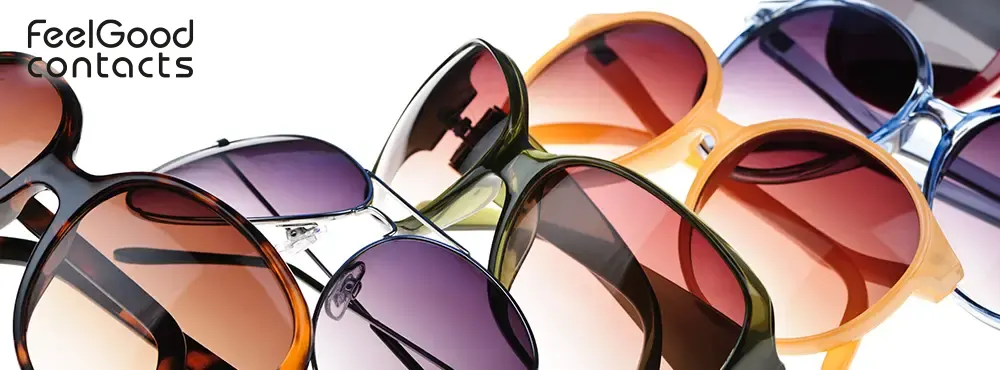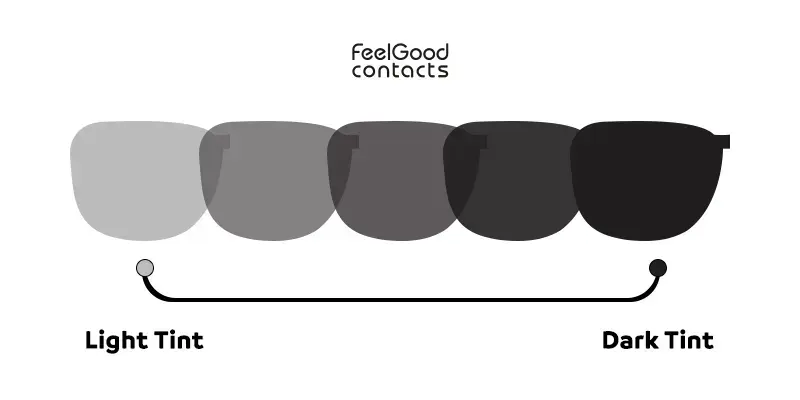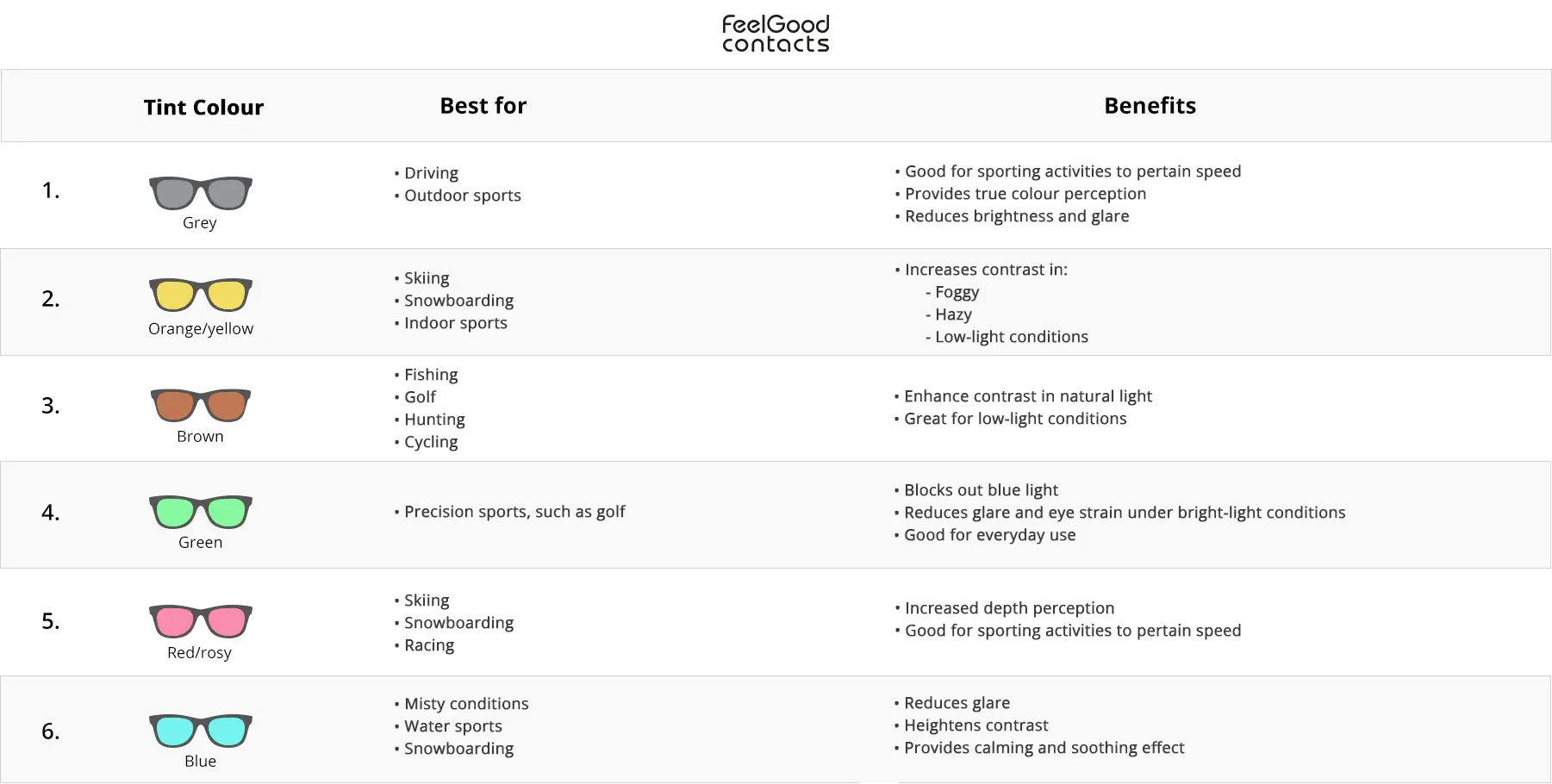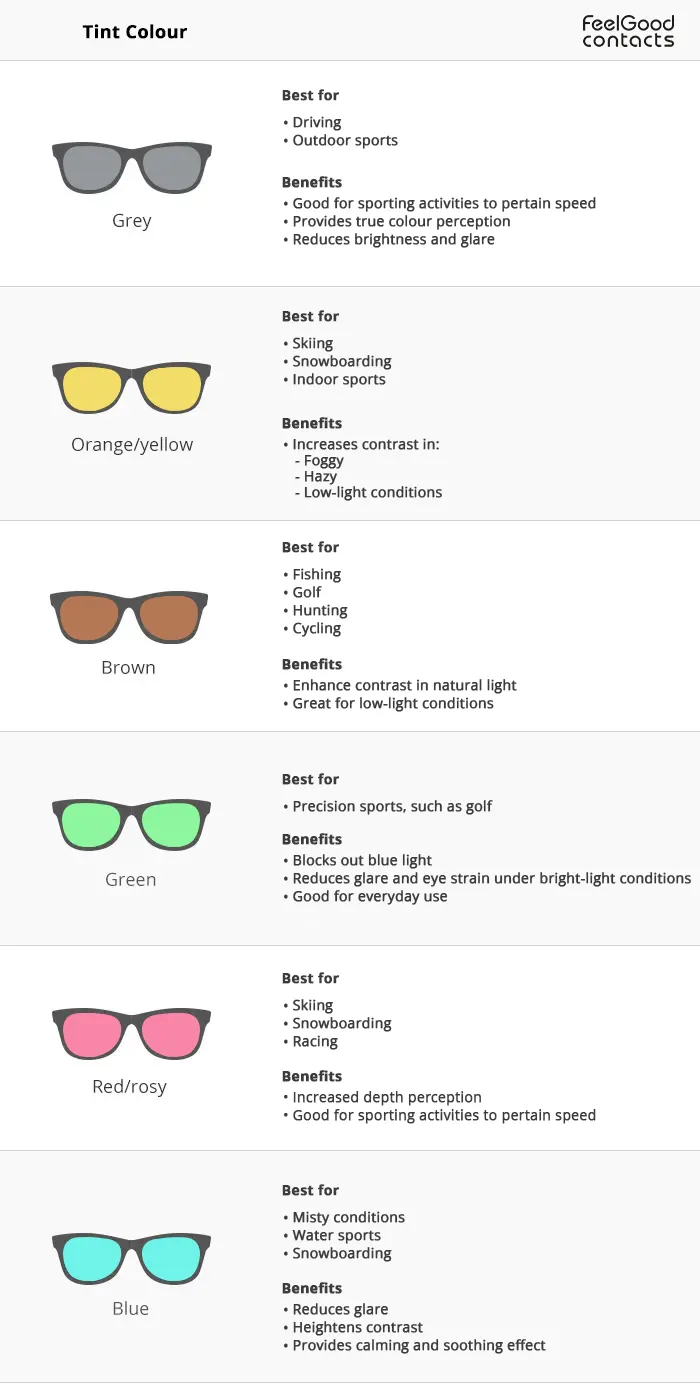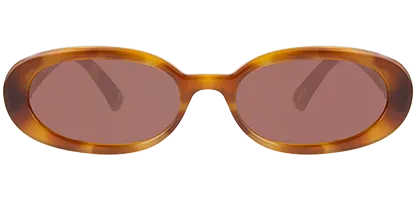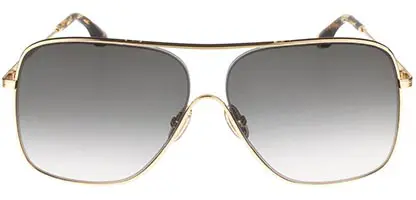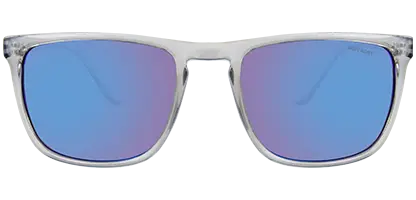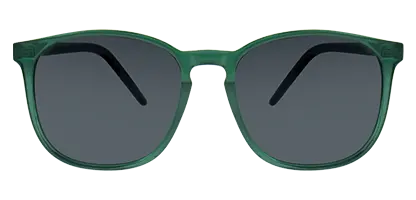2. Gradient tint
Gradient lenses are dark at the top and gradually get lighter towards the bottom. They are an excellent choice for driving as the darker top part of the lens offers protection against the bright sunlight, while the clear bottom allows the wearer to see the dashboard easily.
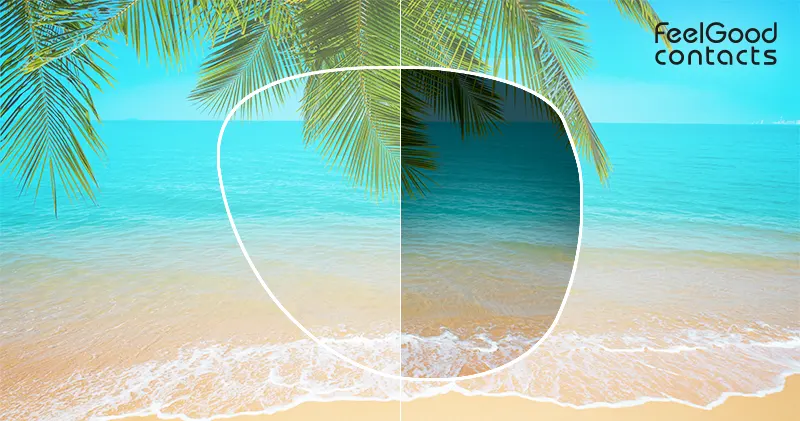
3. Polarised tint
Polarised lenses feature a polarising filter to block horizontal glare from light reflected off surfaces such as water, snow, roads and car hoods. They improve visual comfort by increasing contrast and reducing eye strain.
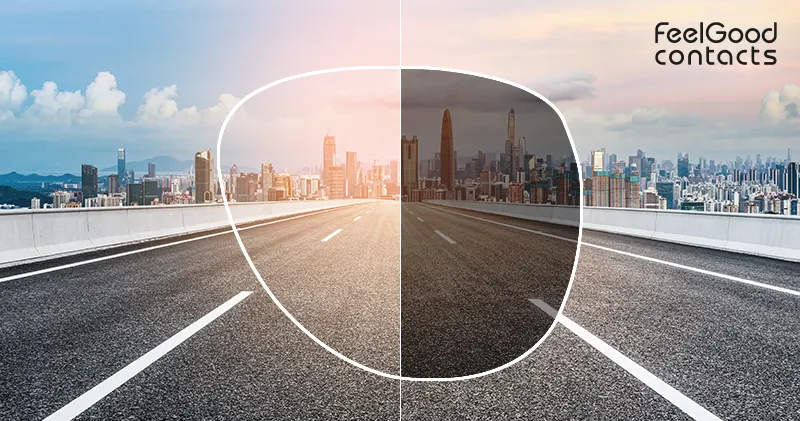
Polarised lenses can make it difficult to read LED screens, which can be challenging while driving, especially when using GPS.
Great for those with active lifestyles, they come in a range of colours, with dark shades offering a higher level of polarisation. These lenses are best for fishing, sailing and water sports.
4. Mirrored tint
Mirrored lenses improve visual comfort in bright conditions and feature a highly reflective surface on the front layer of the lens. They come in a single colour of an iridescent mix of two or more coloured lenses and will add a stylish and aesthetic to your look.
The mirror coating is on the front of the lens and the back of the lens has one of the standard tints (grey, brown or green)which the wearer will see.
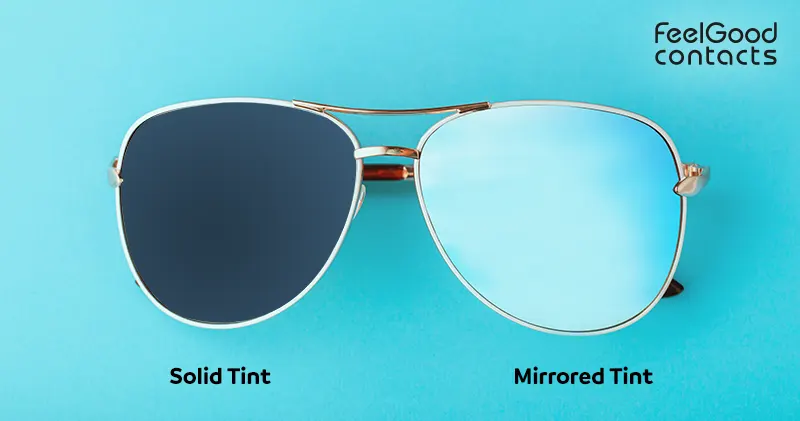
What is the darkest tint for sunglasses?
The darkest tint for sunglasses is lens category 4. However, the most popular category is 3, as category 4 is too dark for driving.
Category 3 sunglasses have approximately 20% light transmission and are recommended for activities involving strong sunshine such as water sports. All sunglasses at Feel Good Contacts have the category 3 tint as standard.
Please note that category 1 to 4 sunglasses are NOT suitable for nighttime driving.
What are the best sunglasses for blocking sun?
- The best sunglasses for blocking the sun are grey, green and brown sunglasses.
- Mirrored lenses are also an excellent choice as they reduce the level of light and glare, ensuring that sun rays are reflected away from eyes in bright conditions. You’ll be able to find a range of mirrored sunglasses by brands such as Oakley, Ray-Ban and Superdry.
Trending tinted sunglasses 2024
At Feel Good Contacts, you can browse from a wide range of fabulous, tinted sunglasses for less price. From Mirrored to solid tints, find a suitable pair for yourself.

 Offers
Offers Account
Account
 Favorite
Favorite
 Basket
Basket

 OFFERS
OFFERS










